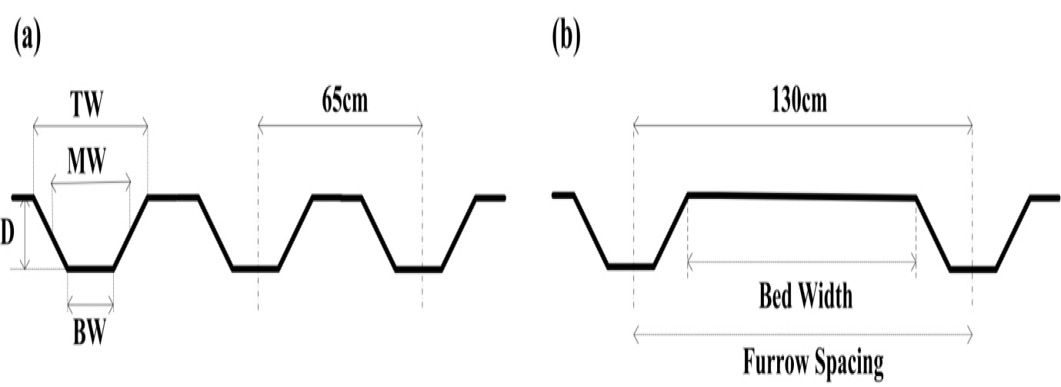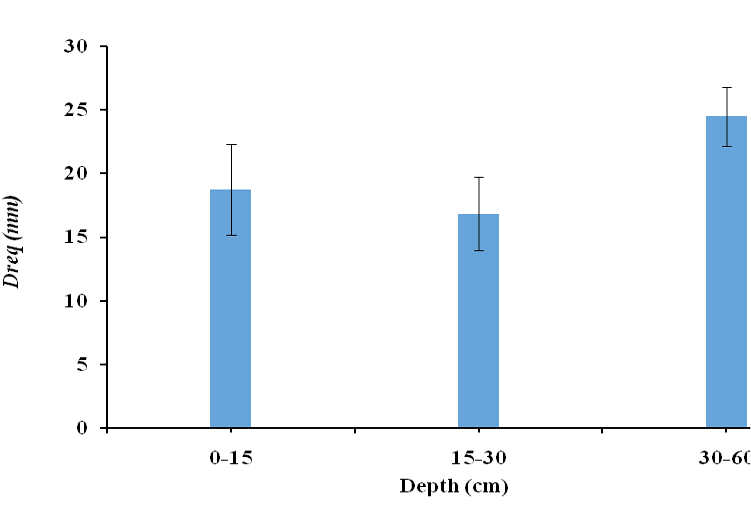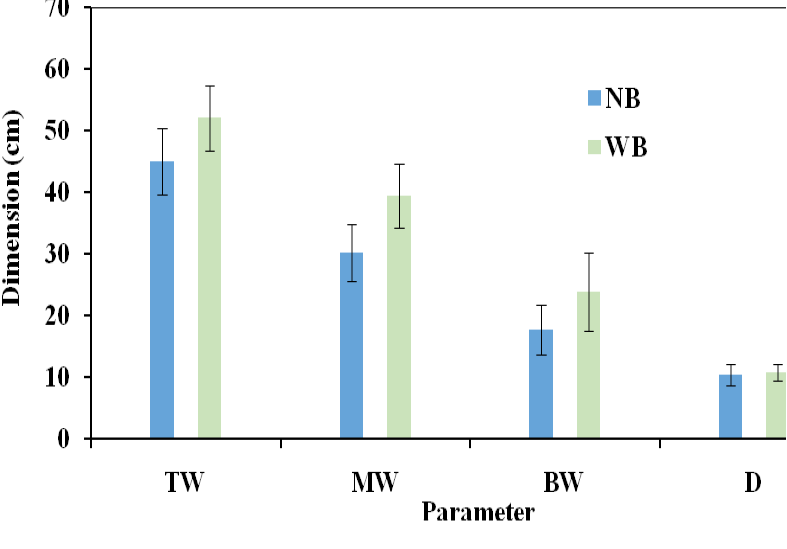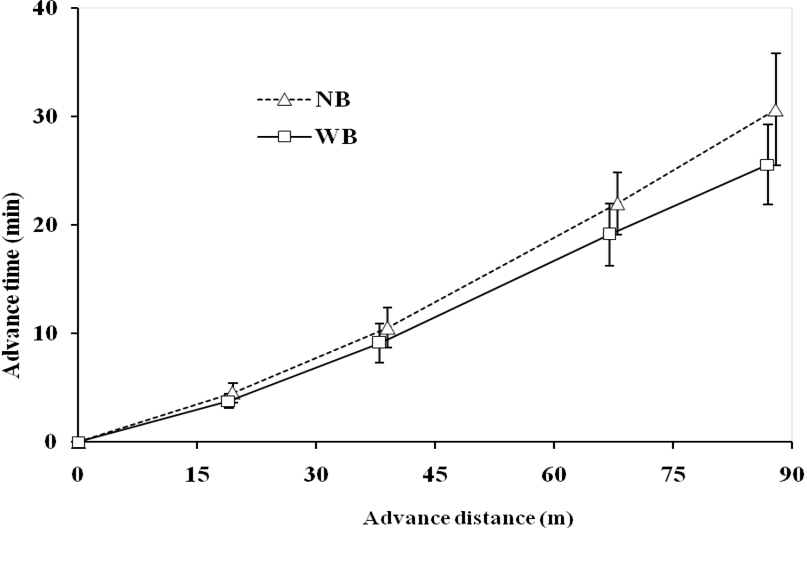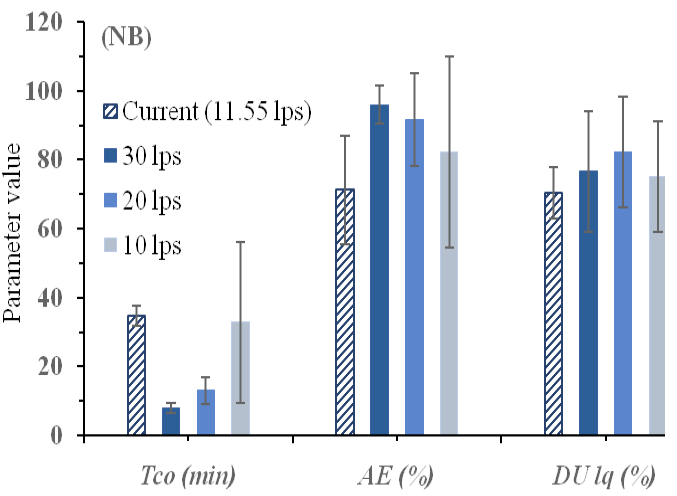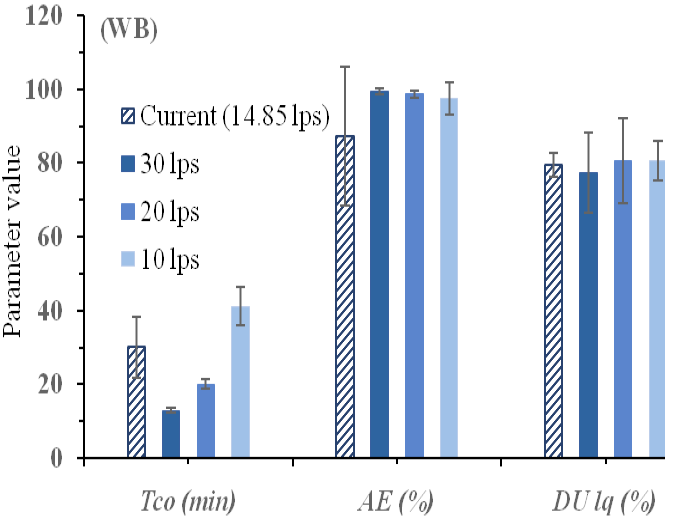Strategies to Improve the Irrigation Efficiency of Raised Beds on Small Farms
Strategies to Improve the Irrigation Efficiency of Raised Beds on Small Farms
Ghani Akbar1, Steven Raine2, Allen David McHugh3, Greg Hamilton4 and Qurban Hussain5
Raised bed dimensions showing (a) NB: with furrow dimensions (TW: top width, MW: middle width, BW: bottom width and D: furrow depth; (b) WB: with bed size at Mardan
Average required application depth (Dreq) in three soil layers (0-15 cm, 15- 30 cm and 30-60 cm) on three sites, measured prior to two irrigation events on a sandy clay loam at Mardan, northwest Pakistan (Vertical bars show SD)
Average furrow dimensions (TW = top width, MW = middle width, BW = bottom width and D = depth) measured prior to two irrigation events on three sites for narrow bed (NB) and wide bed (WB) at Mardan, northwest Pakistan (vertical bars show SD)
Effect of bed size on average water advance rate along furrow length in three sites during two irrigations on a sandy clay loam at Mardan, northwest Pakistan (vertical bars show SD)
Optimising irrigation efficiencies with changing inflow rate and time to cut-off for NB
Optimising irrigation efficiencies with changing inflow rate and time to cut-off for WB
Optimising potential application efficiency (PAE) with changing field length, number of furrows and inflow rate for NB
Optimising potential application efficiency (PAE) with changing field length, number of furrows and inflow rate for WB





